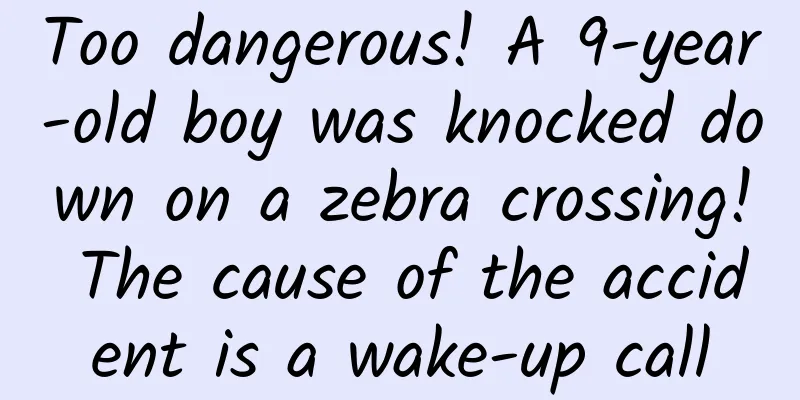Plant Doctor - Parasitic Wasp

|
In the process of forestry and agricultural production, people will deal with a kind of small insects, which are parasitic wasps. This kind of insects are distributed all over the world. In the Beijing-Tianjin-Hebei region of my country, there are also many kinds of parasitic wasps distributed and used by people, becoming plant doctors in the agricultural field and good helpers for people. Parasitic wasps are a general term for parasitic wasps in the order Hymenoptera. They are small in size, mostly black, yellow, etc., and have a particularly slender, needle-like ovipositor that allows them to lay eggs inside the host. Parasitic wasps have a wide range of hosts, including moths flying in the sky, beetles crawling on the ground, and even annoying mosquitoes. Common parasitic wasps are mostly insects of the superfamily Micropionoidea and Ichneumonoidea. They play an important role in forestry production, fruit tree planting and food security. They are good helpers for humans and good doctors for plants. In recent years, parasitic wasps have frequently appeared in the newspapers in the research of biological control in Beijing, Tianjin and Hebei, which shows that they are closely related to our production and life. Parasitic wasps are distributed all over the world, and their battlefields are very broad, from fragrant orchards to neat fields, from creeping grass to tall trees. In the tiny world invisible to people, parasitic wasps fight for survival from generation to generation. Located in the north of the North China Plain, Beijing-Tianjin-Hebei has a vast geographical area. The west and north are mainly mountainous, while the east is a plain that stretches to the Bohai Sea. You can see the agricultural and pastoral border and coastal landscapes. The geographical environment is quite different, so the types of parasitic bees in the Beijing-Tianjin-Hebei region are also different. Among them, Chouioia cunea, Scleroderma guani, Sclerodermus pupariae, Encarsia formosa and Eretmocerus hayati have all performed well in biological control. Parasitic wasps that protect trees Many woody plants (such as ash, Sophora japonica and willow) are attacked by pests that feed on their wood or leaves, causing the trees to wither. The American white moth (Hyphantria cunea) that once broke out in the Beijing-Tianjin-Hebei region is a typical example. The gypsy moth, also known as the fall moth, is a notorious forest pest quarantine target worldwide. Although it looks furry and chubby, it is ruthless in destroying trees. It likes to eat all kinds of green trees and has great destructive power. It is vividly called "smokeless fire" by forestry workers. Since the 1990s, my country has been conducting research on biological control of the gypsy moth. After repeated screening and comparison by experts from the Chinese Academy of Forestry, Zhou's gnawing bee was selected to take on the important task of controlling the gypsy moth. In fact, in addition to parasitizing the pupae of the gypsy moth, this bee also has a special liking for many lepidopteran pests, such as the willow moth, the gypsy moth and the red pine caterpillar. Fraxinus chinensis is an important tree species in forestry, and Fraxinus velutipes is the city tree of Tianjin. They all belong to the genus Fraxinus of the family Oleaceae, and have well-developed root systems that can be used to prevent wind and fix sand; their wood is tough and can be used to make various furniture; they also have medicinal value and the ability to resist toxic gases (such as sulfur dioxide and chlorine). They are attacked by longhorn beetles, bark beetles and other trunk-boring pests and scale insects. In order to protect ash from these pests, "tree guards" are needed to protect them. The swell-legged bee of the ash bark beetle is a new species of swell-legged bee discovered and published by experts from the Chinese Academy of Forestry in Tianjin. It is also an important parasitic natural enemy of the narrow ash bark beetle. The body length of the wax borer is about 2 mm. The female insect is wingless and looks like a long-bellied ant. They sacrifice their ability to fly in exchange for a strong reproduction rate. In addition to controlling the narrow ash borer, after artificial domestication, they can also learn to deal with other forestry pests such as the chestnut longhorn beetle and the pine beetle. This learning ability utilizes the insect's ability to recognize chemical information substances. Although the sources of this information may be different, they will eventually search for the corresponding host. If this ability can be used properly, it will be of great benefit to the improvement of biological control technology and efficiency. The red pine caterpillar is also a major pine wood pest in Beijing, Tianjin and Hebei. There are quite a few small wasps that can parasitize it. Among them, the pine caterpillar trichogramma (Trichogramma dendrolimi) has a body length of 0.36 to 0.64 mm. As its dominant parasitic wasp, it plays an important role in the biological control of pine caterpillars. In addition, a new species of Obolodiplosis robiniae parasitizing the locust leaf gall midge was reported in 2009, and the lilac gall midge (Obolodiplosis robiniae) reported in 2019 also has a parasitic insect of the family Obolodiplosis. It can be said that parasitic wasps are ubiquitous in nature, and we just need to discover and utilize them. Parasitic wasps protecting fruits Persimmons, hawthorns, peaches, dates, plums, loquats and apples are all fruits that people love in their daily lives. However, these delicious fruits are not only eaten by people, but many insects also covet the sweet and sour fruits. The insects are so greedy that sometimes they even destroy the entire fruit tree. In order to protect fruits and fruit trees, people also use parasitic wasps to deal with pests. The main targets of parasitic wasps are aphids, whiteflies and scale insects, which are the most harmful to fruit trees. Once they occur, they are often in large numbers and fruit trees cannot cope with them. The existence of parasitic wasps can control the population of these pests and maintain a relative balance, which is very beneficial to the ecosystem. The woolly apple aphid is a major fruit tree pest that harms apple-producing areas around the world. It occurs in various parts of my country, and there have been related reports in Beijing, Tianjin, Hebei and other places. In recent years, it has become more and more serious. There is an insect called the sunbee, that is, the woolly apple aphid aphid wasp (Aphelinus mali), which is the natural enemy of these woolly apple aphids. They are about 1.2 mm long and are active for about 5 months each year. They also cover the period of occurrence of woolly apple aphids, which can be said to be a full range of prevention and control. In actual combat in orchards, the bee has also achieved good results, and the natural regulation of woolly apple aphids can last for a long time. Scale insects are also a health killer of fruit trees. They are not only numerous, but also of many types. They are relatives of the same order as aphids. However, unlike aphids, scale insects often have a layer of "protective cover" (i.e., scales) to protect themselves. Sometimes they gather on branches, sometimes on leaves, and even on fruits to feast on them. Fortunately, we also have many types of parasitic wasps that can deal with them. For example, many species of Encyritidae can be used to control wax scales, shield scales, and mealybugs. In addition, many small wasps such as aphid wasps, golden wasps and ichneumon wasps can parasitize scale insects, thus controlling the density of pest populations and protecting fruit trees. Therefore, parasitic wasps are also good helpers for fruit farmers. Parasitic wasps protect humans Parasitic wasps are the most widely used biological control insects. Although they are very powerful in eliminating pests, they are extremely fragile. Their body size is usually measured in millimeters or even micrometers. A strong wind can blow them to pieces, and a heavy rain can make them sink into the mud. Survival is not easy, but sometimes parasitic wasps are accidentally injured by people. The first is the release period. As a biological control insect, the timing of release is very important. Only when the pests are released at the peak of the corresponding insect stage can they play the greatest role. If there are too few pests at the time of release, many parasitic wasps will have to leave sadly because they cannot find a host; and missing the best time for parasitism is a fatal blow to some parasitic wasps. There is another enemy of all insects - pesticides. Parasitic wasps are also insects, and those pesticides that can kill pests are even more toxic to them. Especially broad-spectrum pesticides, the one-pot insecticide method is destined to be extremely unfriendly to the natural enemies of pests. Therefore, the rational use of pesticides can protect our parasitic wasp comrades and give full play to the advantages of comprehensive prevention and control. In addition, farmland ecosystems are not suitable for parasitic bees, because many parasitic bees live in forests. We artificially "move" them, which is actually against the laws of nature. So, how can we compensate them for their "mental loss"? Planting grass in farmland and orchards is a good choice, such as alfalfa. Alfalfa has a well-developed root system and is shade-tolerant and trample-resistant. It has extremely strong vitality and can improve soil and conserve water. Most importantly, planting grass can attract natural enemies to live here, and the pests on the grass also provide a stable food source for natural enemies, making it easier for them to move around farmland or orchards, giving them more opportunities to enter the target area to help drive away pests, which can be said to kill two birds with one stone. In order to protect these comrades who fight side by side with humans, please treat parasitic wasps well and let us remember these little insect heroes who work silently and hard. |
<<: How does an anti-cancer drug worth 1.2 million treat cancer? Is it really effective?
>>: "Dive" into deep water at night to explore the splendor of ancient marine life
Recommend
Why do bicycles also love "magnesium"?
What? Bicycles love magnesium too? It turns out t...
How can I open an account for Sogou Promotion? What information do I need? How much money do I need?
(1). There are many ways to open an account. You ...
How to correctly place YouTube TrueView video ads
Why run YouTube TrueView ads? YouTube TrueView di...
Science in the Week: Will Tying Your Hair Often Make Your Hairline Higher?
2022, Week 7, Issue 5, Total Issue 21 It’s almost...
What are the short video weight indicators?
Whether it is optimizing a website or making shor...
Why is the conversion rate so low?
"What would you like to drink? I want Coca-C...
Is it inconvenient to take a taxi during the Spring Festival? Don't miss these three electric vehicles that can be purchased with only the year-end bonus
It's the Spring Festival holiday again. Altho...
Five social marketing strategies for 2022
Searching for products and brands on social media...
My eyes are on fire while working from home. How can I cure dry eyes?
Working at a desk for a long time at home, someti...
How to easily operate content-based products? Just learn these 5 tricks
In the Internet product market, content-based prod...
230,000 patents shared for free: This giant wants to end the global mobile phone patent war
Recently, Google organized the Android phone camp...
Why has the power battery industry become a hunting ground for capital players?
Recently, four landmark events have shocked the p...
Dealing with two common problems in iOS development
[[134199]] (I) “Unknown class XXViewController in...
Interpreting the universe! This "powerful" astronomical telescope sets a new world record!
Produced by: Science Popularization China Author:...
How much is a carnival in RMB? Detailed list of 2021 Douyin gift prices!
People who often watch Douyin live broadcasts are...









